

Within 3DMAGGS, the Thomas & Middlecoff source terms may be used alone or in combination with the Sorenson & Steger source terms. The Sorenson & Steger source terms are implicitly computed and corrected iteratively until the first point away from a boundary is orthogonal to the boundary, as shown below:
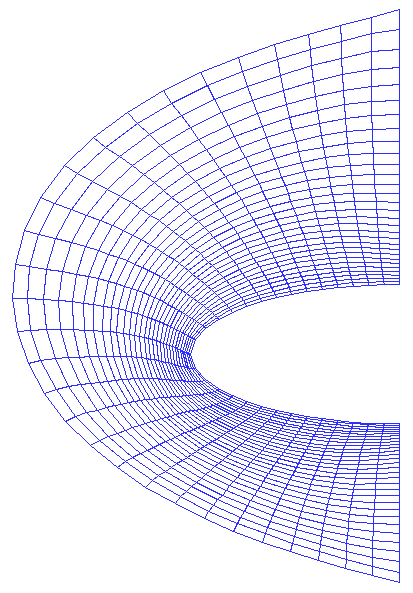
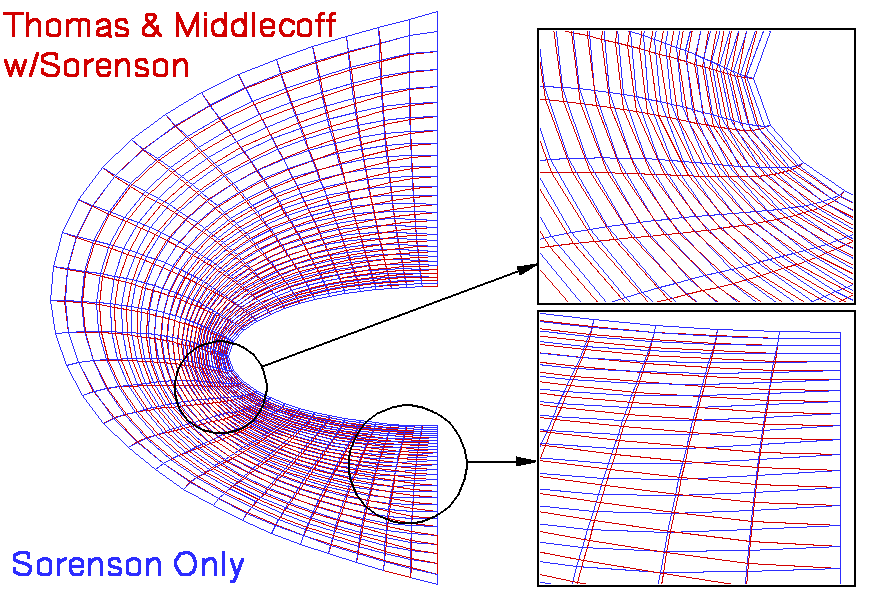
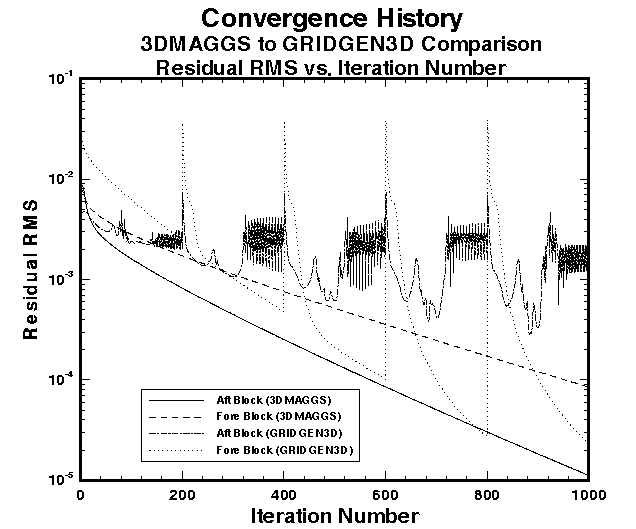
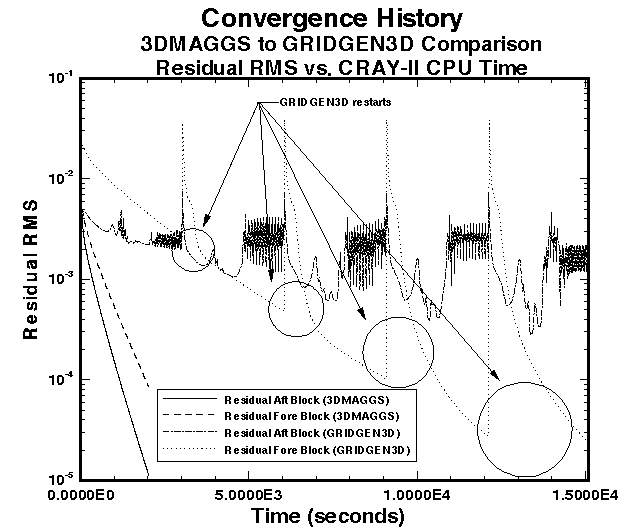
Blend between opposing faces in the I-direction:
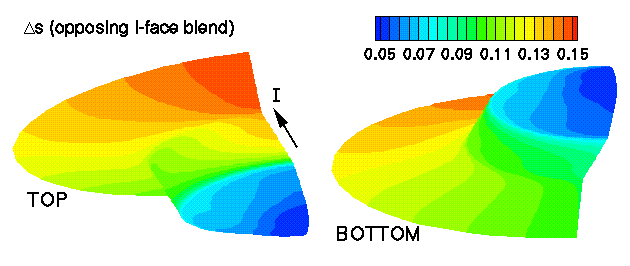
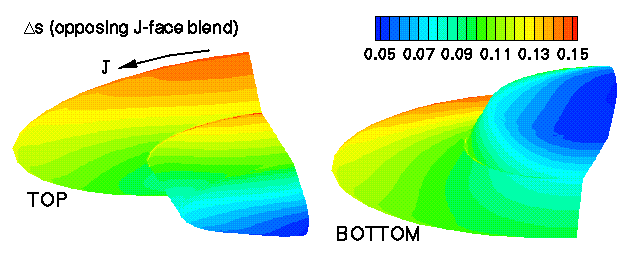
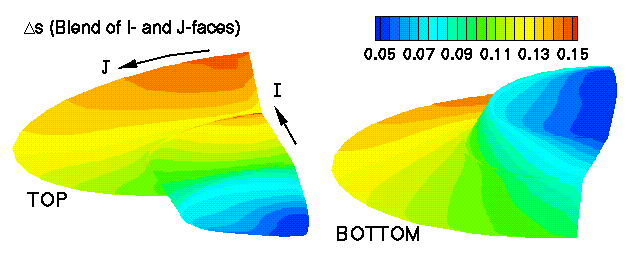
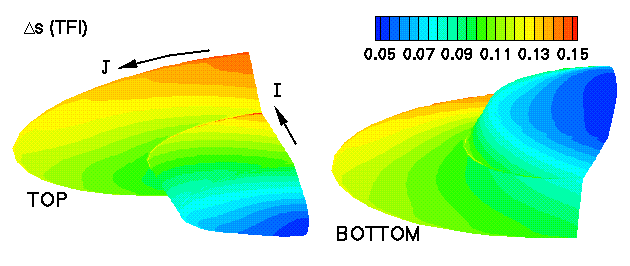
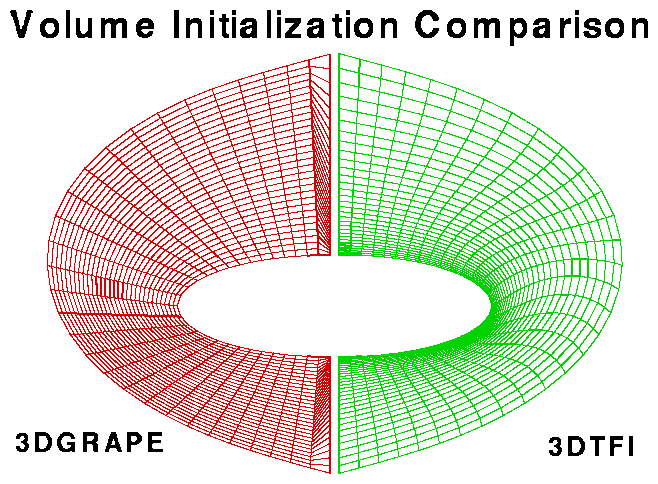
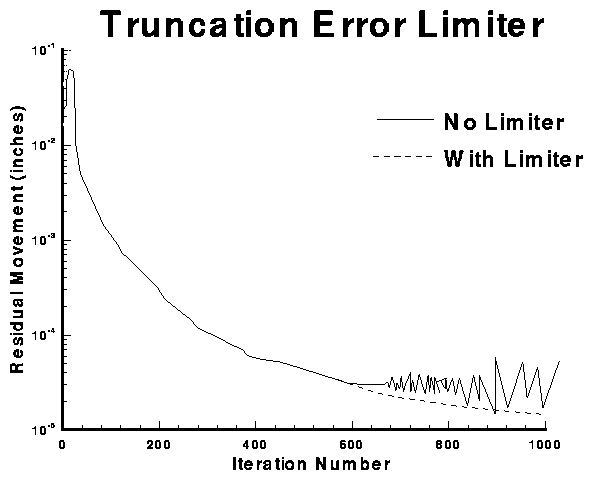
***** PRE 3DMAGGS CONTROL FILE *****
-------------------------------------------------------------------------------
Working directory of 3DMAGGS runs (a):~/mesh/ssv/c1/3dmaggs/elevon/10/
FLAGS ctd,face,dsi,3dj,3dg,3dv (6i2): 1 1 1 1 1 1
UNIX Script file (cray,sgi,onyx) (a):sgi
Configuration name (a):SSV001VIS -> Controls @ 10 degrees
Default file name prefix (a):elv10-vol
Block Information file (*.bnda) (a):elv10-vol.bnda
Face Information file (*.mlga) (a):elv10-vol.mlga
Number of iteration sequences (i2):03
Number of Laplace(0) Coarse(0)/ Thomas &
Iterations Poisson(1) Fine(1) Middlecoff
100 0 1 0
300 1 1 0
600 1 1 3
Relaxation parameter (f12.6):-.75
Decay rates for each block/face (f12.6):6.
Block Face Decay
Number Number Rate
1 1 -.45
1 2 0.40
1 3 0.40
1 4 0.25
1 5 0.25
1 6 0.15
Sorenson init (1); 3DTFI (2) (f12.6): 2.
Orthogonality Control (i4): -6
Block Face Interp. Interp. Blending Normalized
Number Number indx1->3 indx2->4 Function Arc Lengths
1 1 2 2 3 1
1 2 1 1 3 1
1 3 1 1 1 1
1 4 1 1 1 1
1 5 1 1 3 1
1 6 2 2 3 1
The PREMAGGS code generates all the input data decks for 3DMAGGS, generates scripts to control 3DMAGGS based on architecture, redimensions 3DMAGGS and 3DVOLCHK for the proper amount of memory required, and generates the cell heights used in the formulation of orthogonality controls with the Poisson equation solver. This preprocessor significantly reduces the steps to convert GRIDGEN3D input data to the point of running the 3DMAGGS code to develop a volume grid.